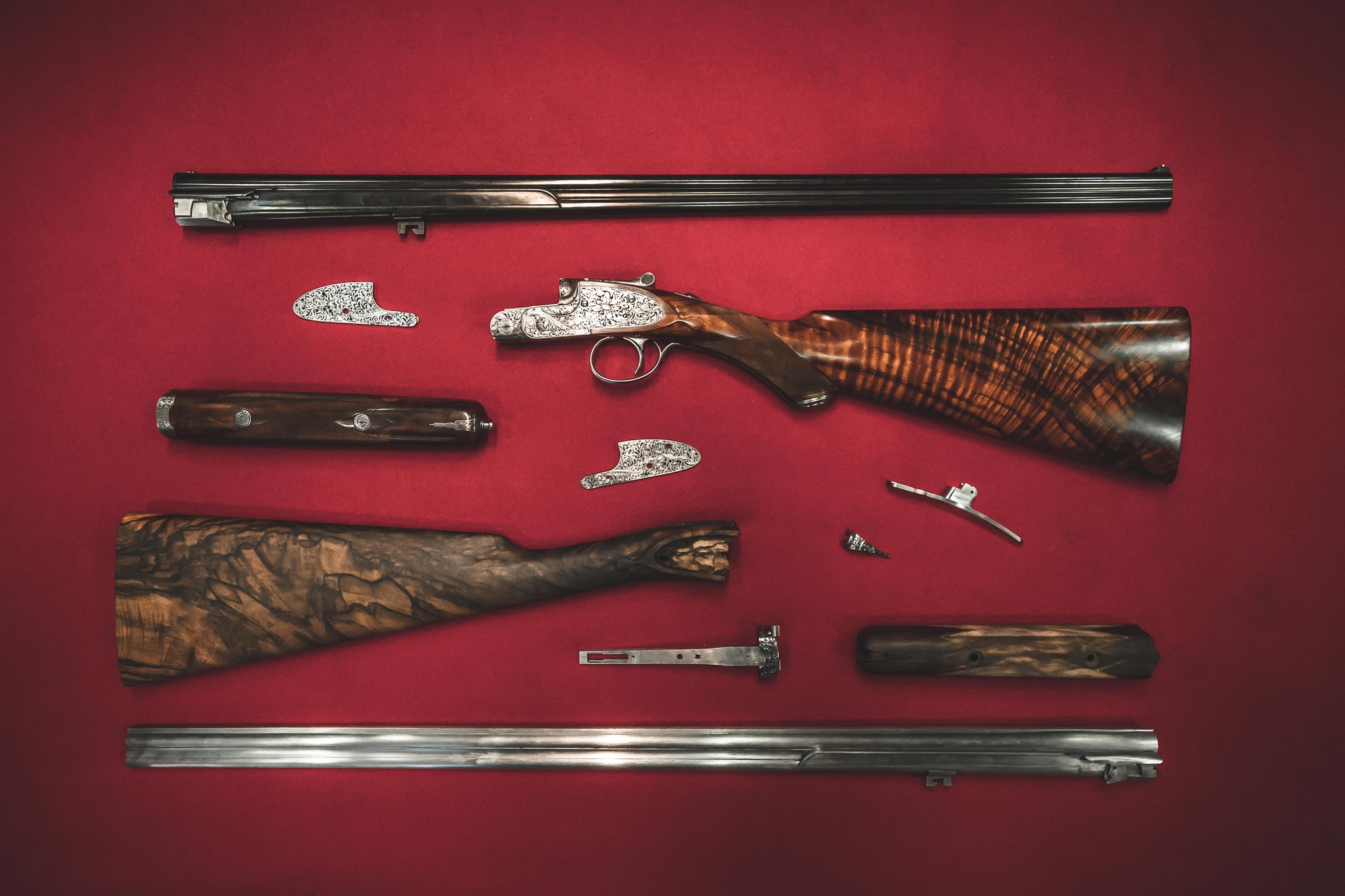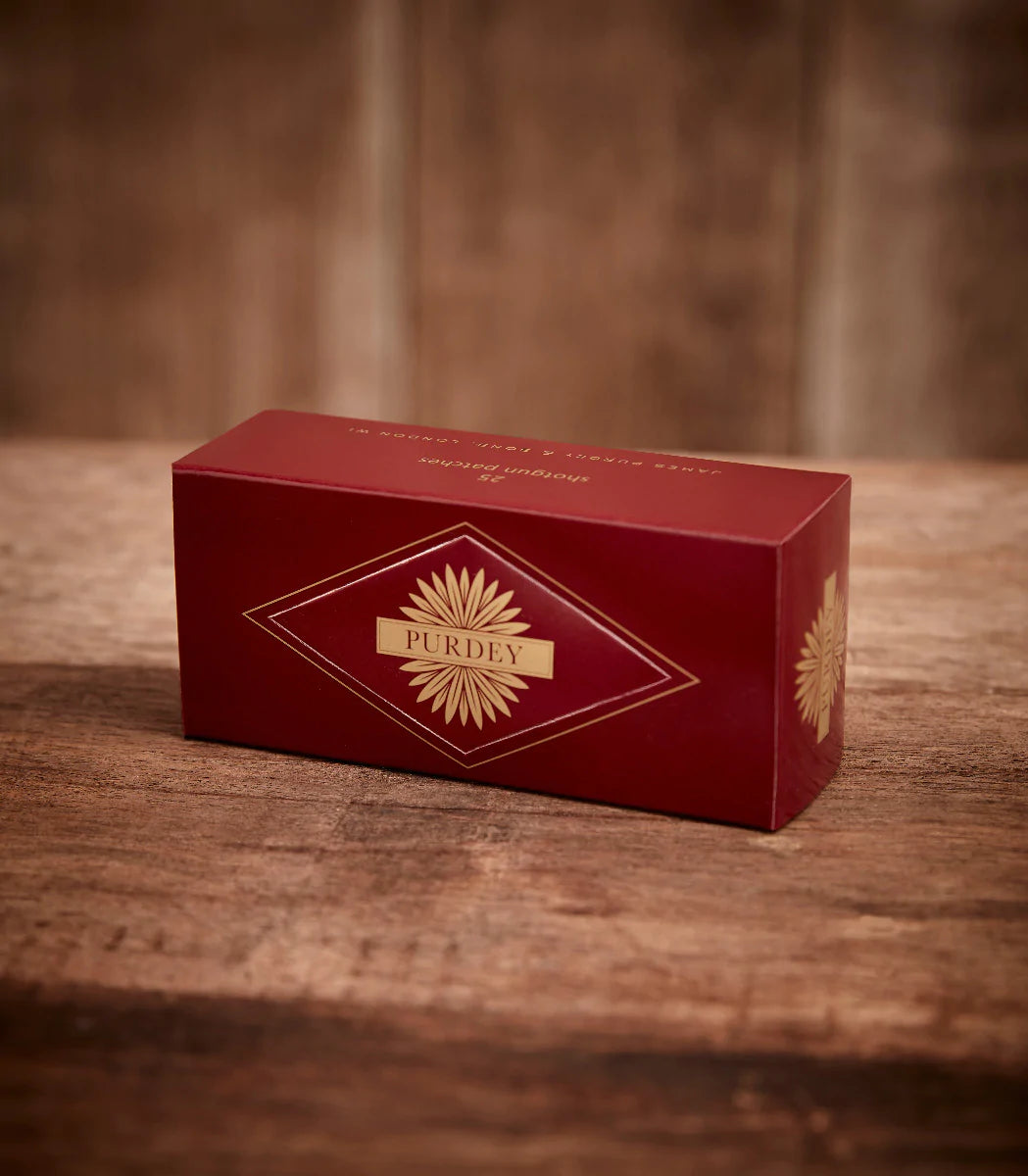
Gun Care Recommendations
Just as you polish your boots, having a successful day on the field starts with the care of your equipment. Cleaning your gun is a simple but effective way to ensure its longevity and performance between services. Ideally, you should be cleaning your gun after every use to remove excess moisture, unburnt powder and dirt. We’ve put together a straightforward guide to at-home cleaning. But cleaning is no substitute for regular servicing — both are important for maintaining your gun.
This is just a guide for standard cleaning. If you require any assistance or your gun needs specialised attention, our Customer Service team will be happy to advise you.
For the best results, we advise you to clean your gun in the following order:
• Action
• Forend
• Barrels (internal and external)
• Ejectors
• Removable chokes (where fitted)
Gun oil should be used sparingly as excess oil or cleaner can damage the stock. Do not use WD40 oil.
Method For Sidelock Side-By-Sides and Over-And-Unders
The most effective method is to use a small narrow soft brush to remove any dirt or water from the whole of the action, paying special attention to the inside of the base of the action. A paintbrush is the best tool for this, as it’s stiff enough to get into the most difficult areas, but a cotton bud will suffice.
In wet weather, make sure you clean your shotgun as soon as possible after shooting has finished. Once cleaned and dry, if possible, store your shotgun with the barrels pointing down. This will help to drain off any water that may have entered the action.
Method For Sporters And Over-And-Unders
The Purdey Sporter has a detachable trigger mechanism. To remove it, first lie the gun on its side, with the trigger facing towards you. Then press the release button located behind the trigger, and pull the trigger unit towards you.
Gently use a cotton bud to remove any dirt and grime from the mechanism. Make sure the unit is clean and dry before applying any gun cleaner and/or oil.
The forend houses the ejector mechanism but is often neglected when shotguns and double rifles are cleaned. Use a cotton bud to remove any dirt and wipe the metal parts with a clean rag. Be sure to dry both the wood and metal parts thoroughly.
A shotgun’s barrels must be cleaned thoroughly to prevent any corrosion and to ensure they are clear of obstructions.
There are three main types of brush used to clean the inside of the barrels:
• A phosphor bronze brush has stiff bristles that help to break up fouling deposits within the barrel.
• A brass jag allows you to attach a rag or patch and will remove the dirt and broken deposits from inside the barrel.
• A woolly mop provides the final polish and makes sure the bore is spotless.
Cleaning The Bores Of The Barrels
Place a small amount of Purdey gun cleaner/lubricant inside the barrel. Holding the barrels firmly on a soft surface, work the phosphor bronze fairly vigorously up and down the barrel, from breech to muzzle. After about 30 seconds of brushing, remove the rod and brush and inspect the barrels. Repeat this step until no deposits are visible in the barrel.
For the next step, attach the brass jag to the cleaning rod. Then attach a pre-cut patch, a piece of 4x2 roll or a soft clean rag that’s suitable for the size of the bore. Use the same method to clean the dirty oil from the barrel.
As you progress, visually inspect the barrel to make sure all deposits are removed and the barrels are completely clean.
Finally, push through the woolly mop to make the barrels completely dry and clean before a last visual inspection. When you are happy the barrels are clean, run a lightly oiled patch through the barrels, leaving a thin film of oil to protect against rust/corrosion.
Cleaning The Outside Of The Barrels
Using a brush and cotton bud, clean around the breech/chamber end of the barrels where they lock into the action.
For the rest of the barrels, use a lightly oiled cloth to wipe the exterior of the barrels. This is essential as it helps remove accumulated moisture and dirt. Finally, always check that the barrels are free of any obstruction and/or marks.
If you have any difficulty removing parts of the gun, or if you notice an issue, don’t try to force it. Rather contact our Gun Team so that they can inspect it and advise on a solution.
The ejectors are located at the breech end of the barrels. Deposits of dust, unburnt powder and other residues can often build up between them and where they are housed inside the barrel. It’s essential that the ejectors are checked and carefully cleaned at the end of each day’s shooting. Clean using either a cotton bud, paintbrush or rag, together with a small amount of gun cleaner. Always remove any excess oil after cleaning.
Remove the chokes using the key provided in an anti-clockwise motion. Pay careful attention when removing and replacing the chokes as they are very thin and can be damaged if handled without sufficient care.
Using a lightly oiled cloth, clean the chokes and the threaded area inside the muzzle of the barrel. When you replace the chokes, be sure to apply a small amount of Teague choke grease to the external walls of the chokes (including the thread and body) before refitting the chokes with the choke key. Don’t tighten them too far as this may prevent the chokes from being removed easily.
To maintain the stock and forend of your gun(s) we recommend the following method using boiled linseed oil. It’s easy to administer and will protect the stock with a certain level of water resistance, as well as accentuate the grain.
Find a clean surface to work on and dismantle the gun into its main components (stock/action, forend and barrels). It’s important that you have clean hands and wear an apron or similar protective clothing as the oil is extremely sticky.
Apply a very small amount of oil (just enough to cover the tip of your forefinger) onto the stock. Then rub it evenly with the palm of your hand following the grain of the wood. The aim is to have a thin film of oil covering the wood, whilst leaving as little residue on the stock as possible. After application, the stock and forend should be left to dry for at least 24 hours to allow the wood to absorb the oil completely
Avoid oiling the chequering on the grip, the butt and the forend because this will fill the chequering and create a ‘gummy’ finish.
Please note: Boiled linseed oil is extremely flammable. Always read the instructions on the bottle before use.
We advise that you store your cleaned gun(s) with the mechanism fired (using Snap Caps). When your gun has been used in the rain, store with the barrels pointed downwards and resting on a dry cloth or absorbent material. This will allow any moisture to drain from the action. The cloth should be changed once the gun is dry to avoid trapping moisture against the gun.

Maintenance Kits
Our gun maintenance kits contain all of the essentials required to make cleaning your gun a simple task.